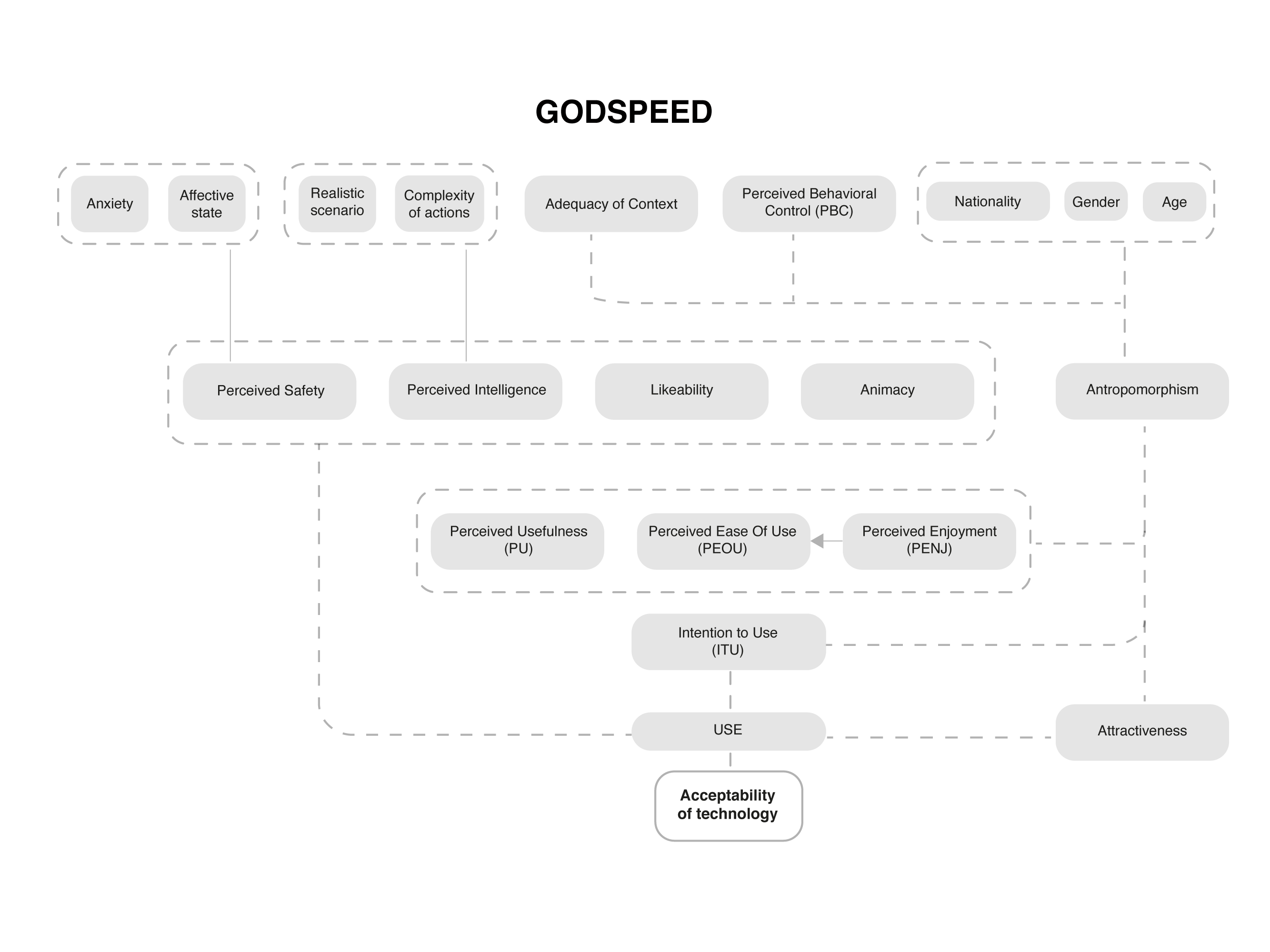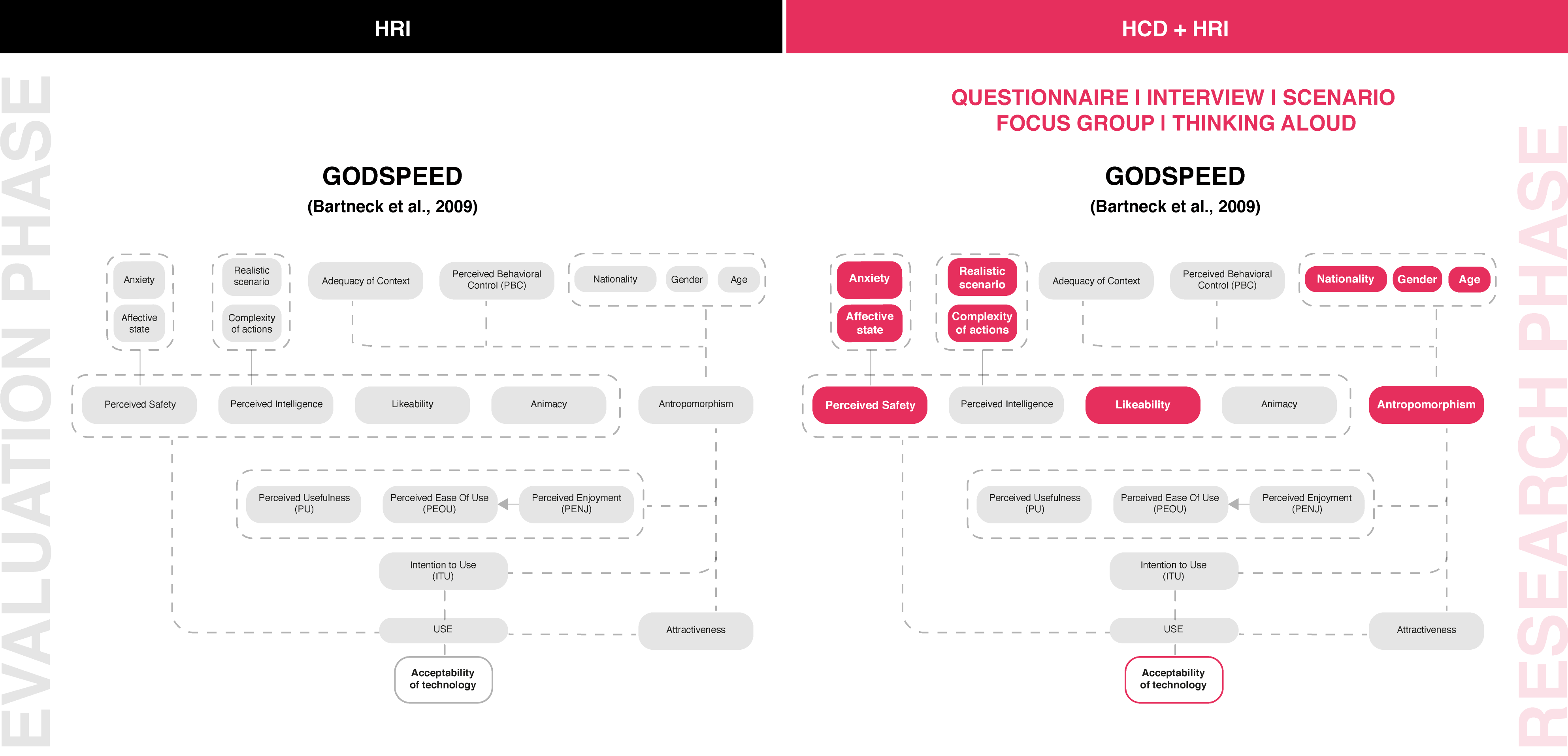Godspeed
Developed by Bartneck et al. (2009)
Godspeed Questionnaire Series
The Godspeed was developed by Bartneck et al., (2009) in order to evaluate five key elements of human-robot interaction: anthropomorphism, animation, pleasantness, perceived intelligence, perceived security. The model architecture shows the correlation and influence of the variables identified by Bartneck et al., (2009) on the acceptability of robotic technologies but also the factors that can influence them. A more in-depth discussion of all the variables and their relationships is made in the section dedicated to the analysis of the main constructs for acceptability.

HCD
HRI
Through the methods of HCD it is possible to preliminarily evaluate some of the factors of Godspeed, that is: anthropomorphism, together with its determinants (age, gender and nationality); perceived pleasantness; perceived security, together with the external factors that determine it (anxiety and affective state); realism of the context of use and complexity of actions (which can influence the perceived intelligence of the robot). The most effective HCD methods for a preliminary investigation of these variables are: Questionnaire, interviews, scenario, focus group, thinking aloud. Below is the architecture of the Godspeed method and the relationships between its constructs that determine the acceptability of the technology. In evidence are the influential variables for the acceptability that can be analyzed in advance through the HCD methods identified in the upper part of the scheme (questionnaire, interview, scenario, focus group, thinking aloud).
